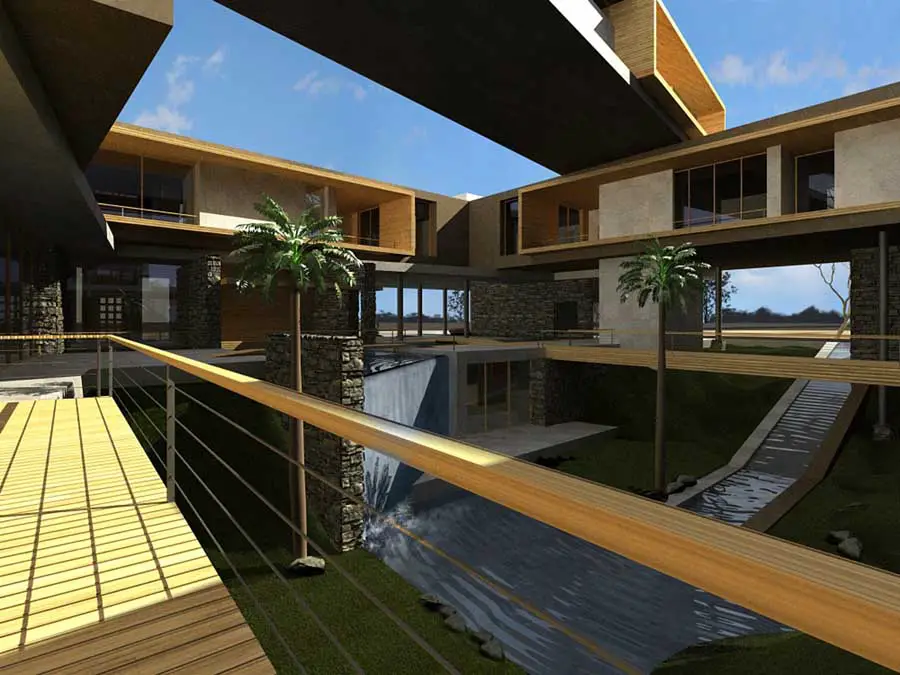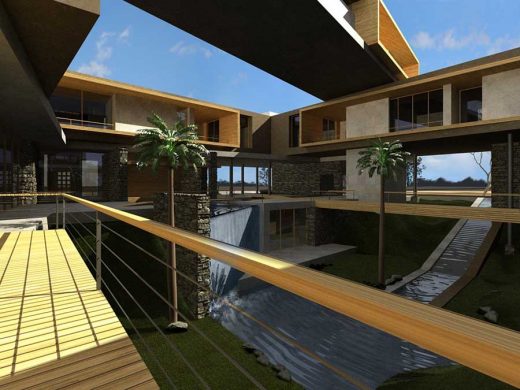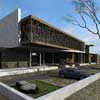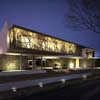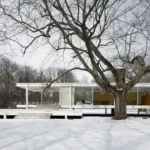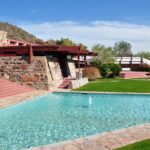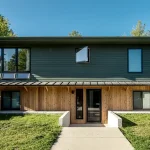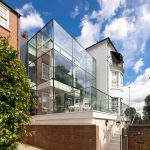A.S. House, Saudi Arabia Property, Sary Residence, Jeddah Building Project Design
Jeddah House : Sary Residence
New Property in Saudi Arabia, Middle East – design by Abiat Architects
9 Aug 2010
New Jeddah House
Category: Future Projects – Residential
Location: Jeddah, Saudi Arabia
Architect: Abiat Architects, Dokki, Egypt
WAF Entry: 2010
The Program & Site For his new mansion in Jeddah, the client’s ambition was to enjoy modern architectural qualities of a contemporary house such as space openness, transparency, sculptural geometry and slick materials, without having to sacrifice any of the long cherished Arab houses traditions of privacy, conservatism, interior/exterior separation, public/family zones segregation and environmental sensitivity.
Accordingly, the required space program reflected this ambition. It is divided into four main independent zones.
The first zone includes the traditional “diwaneya” which can be described as an external guesthouse reserved for the master of the house friends.
The second zone includes the traditional formal salon and dining rooms where big events and gatherings of the extended family happen.
The third zone includes all the family spaces, and that is where openness and modern transparency were especially required. It contains lower and upper living rooms, an entertainment space in the basement, six bedroom suites, a luxurious master bedroom, and large terraces.
The fourth zone includes the service spaces and servants quarters. The degree of accessibility among the four zones of the house varies in importance and necessity following the social codes of Saudi community. The available site is about 6700 squared meters, and the total built-up area of the mansion amounts to about 3400 squared meters.
The Design concept
Morphologically
In order to fulfill that ambition and to resolve the modern vs. traditional posed dilemma, a simple morphological approach was conceived. Three looping, incomplete bent-up masses, of different materials and levels superimpose to create a contained inner space. Each mass forms a level of the three storey house.
When stacked, the missing parts in the masses give way to two large opposite northern and southern gates that transport the users from the outside to the inner space. The land in the heart of the inner courtyard is partially carved into a man-made depression, a valley dotted by ponds and flanked by hilly green landscape and water falls.
Large terraces and a swimming pool overlook the depressed oasis, while an elegant bridge traverses it in the north south direction linking the two gates. The second level mass is sculpted by thin layers of wooden planes into wide terraces overlooking the inner oasis at the heart of the courtyard, and recalling the traditional “mekaad” configuration of Islamic courtyards.
The third level mass bridges the whole composition in the east west direction shading the courtyard. A lattice screen wraps the outside shell of the bent-up masses, especially from the southern and western directions adding a mysterious envelope to the composition.
The first and second zones of the program are housed in the first level mass. The third zone occupies a part of the first level mass and the second level mass. The fourth zone fills the third level bridge as well as the basement level.
The organization of the functions inside the building masses and the morphological composition detailed above, simultaneously caters for the traditional cultural and environmental needs of Saudi life, as well as for the desired living delights of modernistic spaces.
Culturally
The inner courtyard created in the heart of the house allows for an introvert design concept that perfectly suits the Saudi socio-cultural needs and recalls all the qualities of traditional Arab Islamic housing layouts.
On one hand, all the transparent spaces, all the clarity, all the blurring between the inside and the outside, all the daring architectural moves, all the bridging, the sculpting, the overlapping, all the liberal modern aspirations of the client are fulfilled in the contained heart of the house.
It all happens in the heart which is mainly and intentionally surrounded by only family spaces (the second zone of the program) giving more room for openness without any lack of privacy inhibitions.
On the other hand, the exterior shell of the house, of the looping masses, seems more conservative, more solid, and more mysterious with its lattice screen subtly concealing the streets facades providing the required privacy against the external environment.
The lush oasis of greenery and water features in the heart of the house represents a perfect private and care free retreat for the inhabitants. The openings in the building masses are gates that offer a sudden contrasting transition from the hard and conservative outside to the mellow and liberal inside.
Environmentally
The inner courtyard, as traditionally used in the Arab world, provides an environmentally secluded space, where the weather is cooler than the harsh outside by means of shading and geometry-generated air dynamics. Furthermore, the gates and the openings in the surrounding masses allow for horizontal air suction creating currents running from the north and west to the south and east.
The depression in the heart of the courtyard helps as well in providing more vertical room for suction of the colder breeze towards the bottom of the inner space and the rise of the hotter air towards the top, and thus cooling the surrounding spaces. The water loop composed of ponds, pools, and waterfalls circulating horizontally and vertically within the courtyard, offer a natural cooling effect for the air currents traversing the heart of the house.
The third level mass bridging the courtyard from the top, casts large shadows over the walls and floors of the inner space, and thus cooling them for almost all day long, due to its slightly inclined east west direction. Finally, the extended lattice screens, partially wrapping the southern, western, and eastern external facades, help blocking the undesirable desert sun rays hitting the house exterior mainly from those directions.
Jeddah residence images / information from FD
Location: Jeddah, Saudi Arabia
Architecture in Saudi Arabia
KSA Architectural Projects
Saudi Arabia Architecture Designs – chronological list
Saudi Arabia Architecture – Selection
Design: Schiattarella Associati, Architects
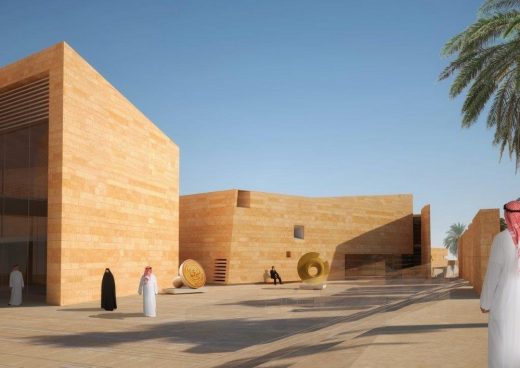
image courtesy of architects
Addiriyah Contemporary Art Center KSA
Foster + Partners
Al Faisaliah Complex
ECHO Architecture
Alrriyadh Ritz Carlton Tower Building
Comments / photos for the A.S. House Saudi Arabia Architecture page welcome

